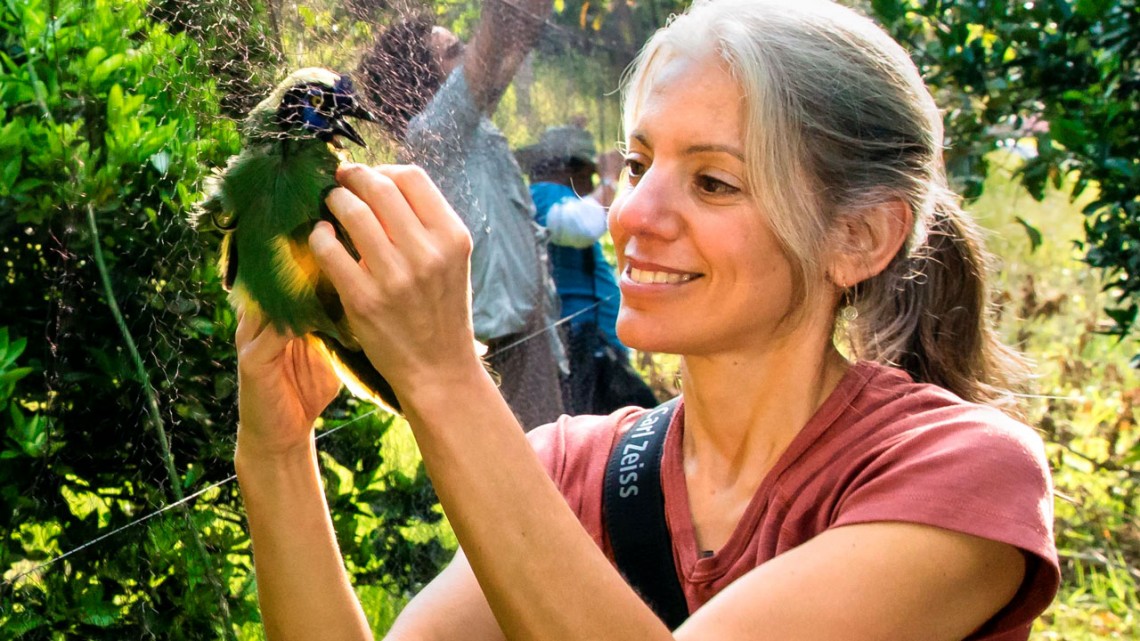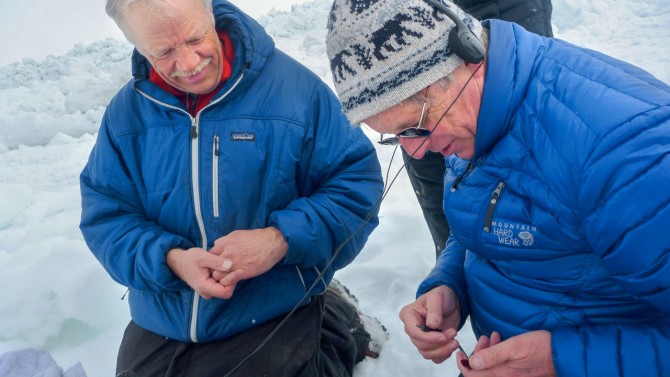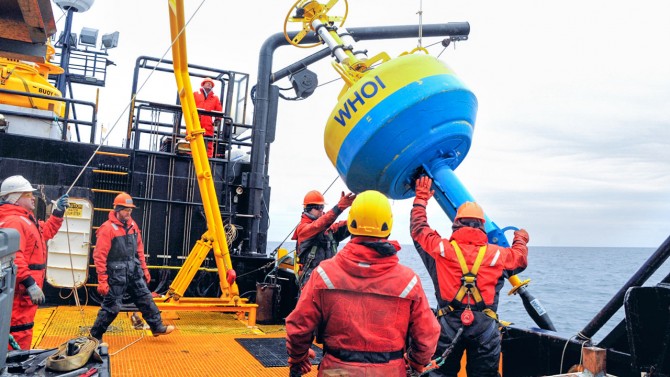
Amanda Rodewald, the Cornell Lab of Ornithology’s director of conservation science, is shown at work in Colombia, where she is helping to conserve bird habitats.
Migrations research highlights human impacts on environment
By Megan DeMint Sheri Englund
As smoke from western wildfires blots out the sun in Northern California and drifts as far as the East Coast and Europe, locals watch daily wildfire updates for evacuation and air-quality warnings. Outside at their birdfeeders, there’s another warning: silence.
Birders across the Rocky Mountain region are reporting a decline in backyard traffic and dead migratory birds – including evidence of mass bird deaths in New Mexico. Sentinel species like wild songbirds are a potent reminder that humans and wildlife depend on the same natural systems and experience similar climate consequences, from forced migration to health risks.
Ecologists Aaron Rice and Amanda Rodewald are working with Migrations: A Global Grand Challenge, part of Global Cornell, to understand how human impacts and activities affect animals – from small birds to the largest whales – and the ecosystems we all share.
“When we are not in tune with natural ecosystems, it’s easy not to pay attention to them,” said Rice, a bioacoustics researcher in the Cornell Lab of Ornithology, part of the College of Agriculture and Life Sciences. “Humans are critically reliant on the ecosystems in which they live and have been throughout human history. I think in modern urbanized settings, this is not as obvious to us.”
In some communities, awareness and appreciation of natural systems is much more prevalent. Rice sees these connections in his Migrations-funded research on whale migrations in the Alaskan Arctic. Indigenous communities, he said, have been observing changes in whale migrations for decades. Noting changes in ice coverage and industry activity, these communities have watched as bowhead whales adapted their seasonal migratory patterns. In turn, their access to whales as a primary food source has been threatened.
This fall, Rice’s team is launching in-depth acoustical analysis of data spanning nearly four decades. Visiting senior scientist Chris Clark began tracking the endangered whales off Point Barrow, Alaska, in 1979.
“We expect to see subtle but significant changes in the timing of bowhead migration in Alaska associated with even small changes in ocean temperature or ice coverage,” Rice said.
The current pace of glacier loss underlines the urgency of climate action – for whales and the humans who rely on them. Even among smaller species, our relationships to the environment are symbiotic.
Rodewald, the Lab of Ornithology’s director of conservation science and a member of the Migrations task force, sees this interdependence in her own research.
“Humans are part of, not separate from, nature and we are connected to species and ecosystem processes,” she said. “Yet people often fail to see the connection between issues they care about and the health of the environment.”
Rodewald is collaborating on Migrations research investigating how weather shapes human migration decisions and routes in Mexico, a project led by sociology professor Filiz Garip. Over the next 30 years, extreme weather events that reduce agricultural production in Mexico are expected to push millions of people to migrate to the U.S. in hopes of finding alternative livelihoods, Rodewald said – yet the most vulnerable workers have the fewest options.
“Not surprisingly,” she said, “poorer households are the least able to move in response to weather shocks.”
The wildfires and their conspicuous effects on the environment underscore the interconnectedness of migration and climate change to ecosystems.
“The reality is that what is good for birds is usually good for us, too,” Rodewald said. “We are degrading the same systems that provide us with food, water, clean air and other services that directly or indirectly support our health and well-being. The bottom line is this: If we make our planet unsuitable for birds and other species, then we make our planet unsuitable for people.”
What can be done to protect our dynamic natural environments? Rice suggests that awareness – such as watching the species in our own backyards – is a critical first step.
“Even local actions can have implications for seemingly distant environments,” he says. “However, the fear is that people won’t notice changes in the environment until it’s too late.”
Megan DeMint is a communication specialist supporting Migrations. Sheri Englund is associate director of communication for Global Cornell.
Media Contact
Get Cornell news delivered right to your inbox.
Subscribe


